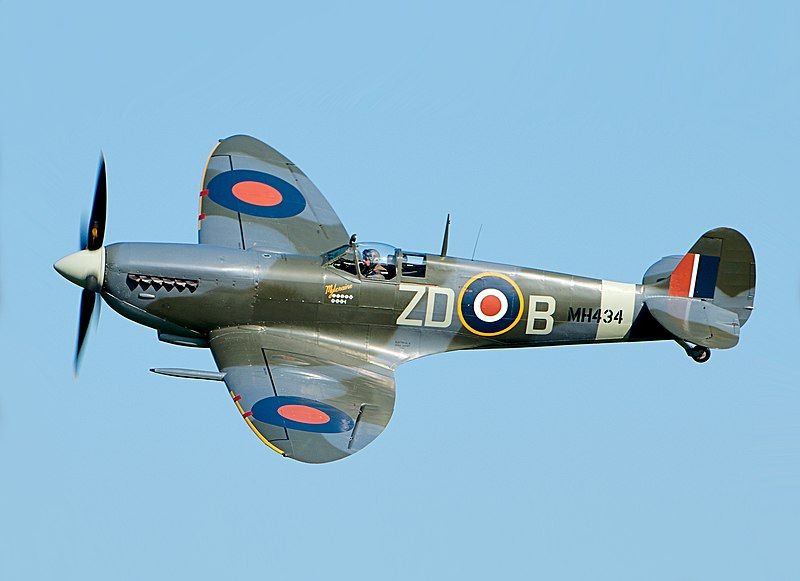Summary
- The Supermarine Spitfire was famed for its design and number of airworthy aircraft.
- The Hawker Hurricane played a crucial role in securing victory during the Battle of Britain.
- The North American P-51D Mustang had significant success in both Europe and the Pacific during WWII.
“Rut-Roh” (as Scooby-Doo the cartoon dog would say), here we go again with yet another sure-to-be controversial Top 5 military aircraft list. In particular, I’ll never forget the proverbial feathers I ruffled with my June 2024 piece titled “Top 5 Historic Military Aircraft That Changed Aviation” due to the conspicuous absence of any British warbirds – Royal Air Force (RAF) and Royal Navy Fleet Air Arm alike – from that particular list.
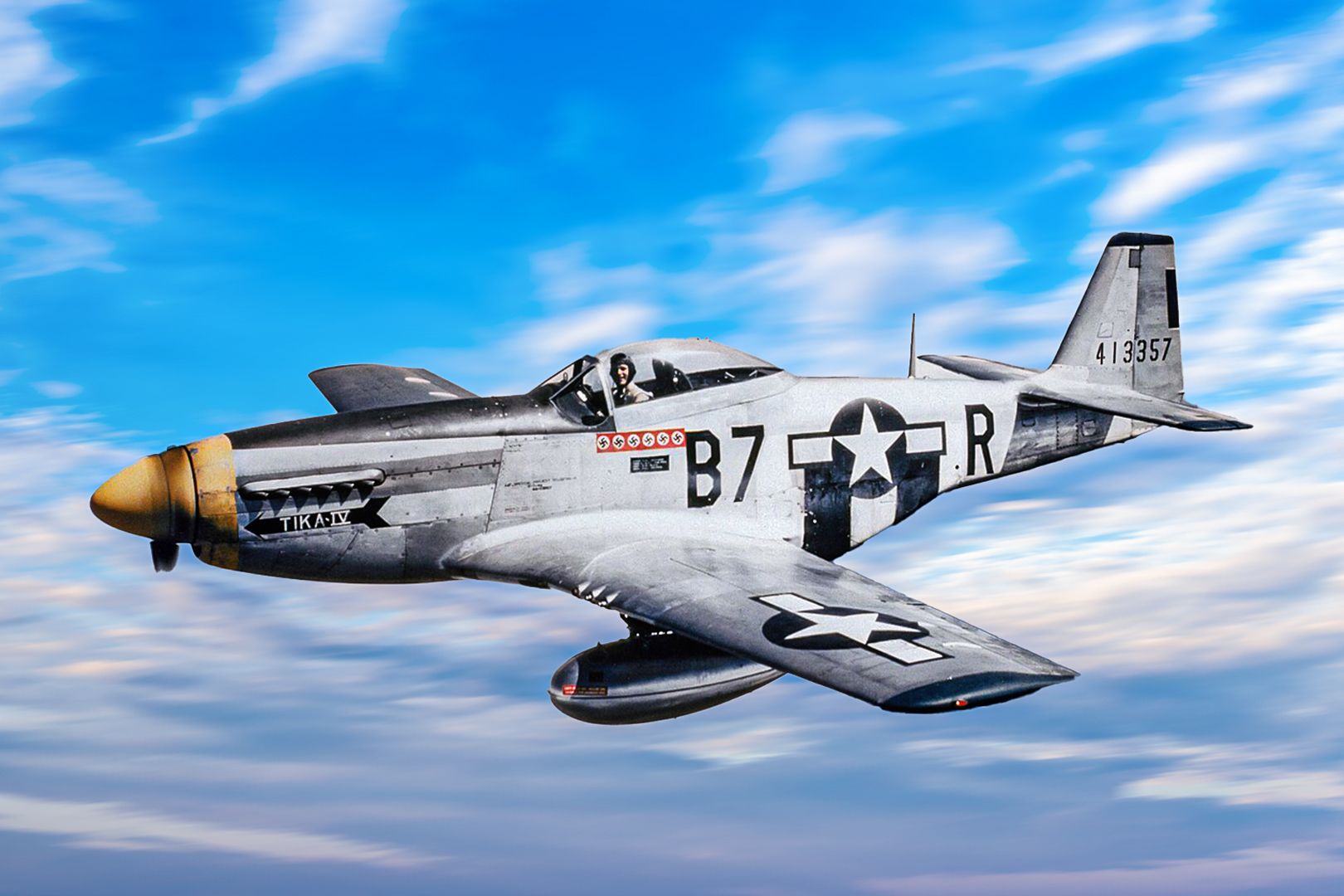
Related
Top 5 Historic Military Aircraft That Changed Aviation
Many military aircraft have made their mark on aviation history. But five in particular have been true game-changers.
Well, I promise to make up for lost time by including some very iconic British fighter planes on this list. And I apologize in advance to the fans of the following excellent Allied warbirds for excluding them, as they just missed out on this Top 5 List (though they certainly would qualify for a Top 10 Most Iconic Allied WWII Fighters list):
- America’s Republic P-47 Thunderbolt (given the plane’s impressive performance, this was a really tough one to exclude)
- The Soviet Union’s Yakovlev Yak-3 (described by Business Jet Traveler‘s Jeff Wieand as a “small, light, excellent Russian fighter”)
- America’s Grumman F6F Hellcat (shot down over 5,000 Imperial Japanese aircraft)
- France’s Dewoitine D.520 (put up a valiant fight against the Nazi German blitzkrieg before the eventual fall of France)
- America’s P-40 Warhawks (immortalized by the “Flying Tigers” and their sharkmouth nose art)
That said, let’s get on with the 5 Allied icons…
1
Supermarine Spitfire
The most famous fighter of the Battle of Britain
This fighter was immortalized by faithfully serving the RAF during the Battle of Britain.
What’s interesting to note is that for all of its fame, the Spitfire actually attained a statistically lower kill tally against the Luftwaffe during the Battle of Britain than the next warbird on this list, and may indeed have been a tad overhyped, as noted in detail in Alexander Mitchell’s Simple Flying article:
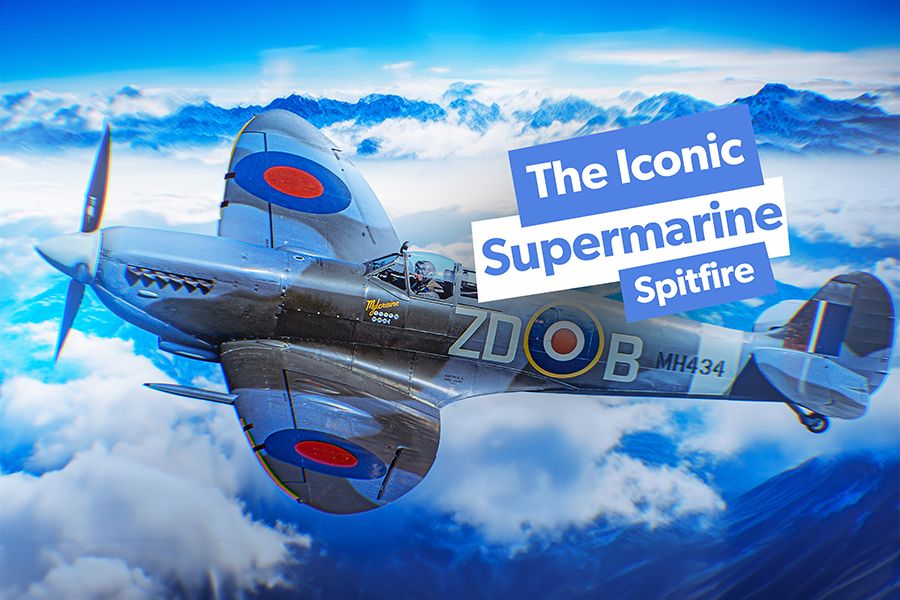
Related
Why Is The Supermarine Spitfire So Iconic?
The aircraft was by far the best-known British fighter of the war.
The Spitfire still garnered more fame due to:
- A flashier design
- Constant re-engineering
- A larger number of remaining airworthy aircraft (at least 70)
I donated to the restoration of one of those airworthy “Spits.” Although I didn’t get to ride in it, I did get to sit in the cockpit of a static display Spitfire Mark XVI at the Royal Air Force Museum London in 2017.
That’s not to say the Spitfire wasn’t a truly valuable contributor to the Allied war effort. The “Spits” still destroyed plenty of enemy aircraft (Nazi German and other Axis powers alike) during the Battle of Britain and throughout WWII, including the following two noteworthy achievements (as per “Fighter Planes That Made History” by David C. Cooke):
- First firing its guns in anger on October 16, 1939, downing two Luftwaffe Heinkel He 111 bombers over the Firth of Forth, Scotland, thus scoring the first air-to-air kills against enemy aircraft in the skies over Great Britain since 1918.
- The first shootdown of a Messerschmitt Me 262 Schwalbe (“Swallow”) jet fighter on October 5, 1944.
An estimated 20,351 airframes were built between 1938 and 1948. Amazingly, as noted by Greg Beyer of The Collector, some Spitfires actually remained in service until 1961 (though Greg doesn’t mention that this was with the Irish Air Corps, not the RAF)!
2
Hawker Hurricane
The lesser-sung hero fighter of the Battle of Britain
Notice I didn’t say “unsung hero.” The Hawker Hurricane is just not as famous as the Spitfire. But that does nothing to detract from its own excellent wartime record and the worthiness of the “iconic” designation.
The quotes from the first two minutes alone of the following YouTube video should give you an appreciation for just how worthy the Hurricane is being on this list:
“The Hurricane was the most dangerous plane we ever had as an opponent during our missions.” — Gerhard Baeker, Heinkel He 111 pilot
“It scored 64 percent of all the victories over German aircraft during the Battle of Britain, and without the Hurricane, we wouldn’t have won, there’s no doubt at all.” –Sir Peter Masefield, UK Assistant to Minister for Aircraft Production
“More enemy airplanes were shot down by Hurricanes than Spitfires. But pretty well every newsman will always tell you that it was the Spitfire that won the Battle of Britain, when, in fact, it didn’t. The Hurricane won the Battle of Britain, helped by the Spitfire.” Wing Commander Roland Beamont, Hurricane Pilot
Pretty solid testimonials there, right?
Manufactured by Hawker Aircraft Ltd. (which later became Hawker Siddeley and is now BAE Systems plc, the Hurricane made its maiden flight on November 6, 1935, and officially entered operational service with the RAF in December 1937. Out of 14,487 airframes built, at least 16 airworthy specimens survive today. Not surprisingly, most of these are located in British Commonwealth countries, but for the benefit of our Stateside readers, there are two options to choose from:
3
North American P-51D Mustang
“Thank you, Captain Obvious!”
I reckon you dear readers must’ve seen this selection coming a mile away. What can be said about the P-51D that hasn’t already been said? I can’t come up with anything original, so I shall once again (like I’ve done in a couple of my previous write-ups) quote Sir Max Hastings in his 1985 book “Victory in Europe: D-Day to V-E Day In Full Color“:
“The bomber offensive had been frustrated in its hope of destroying German aircraft in their factories. But when the American Mustang long-range escort fighter was launched into the skies over Germany in the first months of 1944, it achieved extraordinary success in destroying the Luftwaffe in the air.”
The plane also performed quite well in the Pacific Theater of Operations against the warbird of Imperial Japan. All told, Mustang drivers were credited with destroying nearly 5,000 Axis aircraft in WWII.
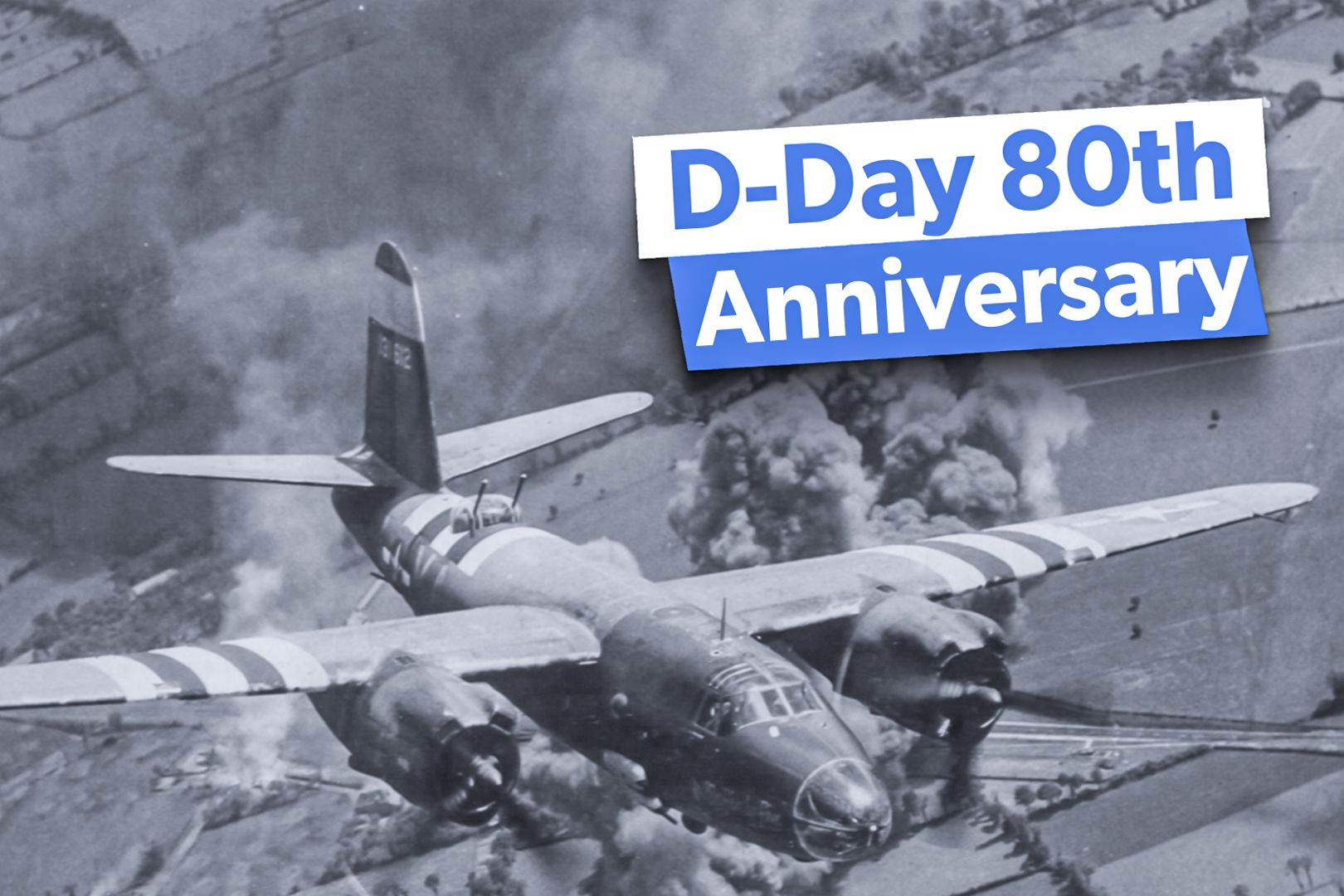
Related
D-Day 80th Anniversary: The Key Role Of Airpower In The Allies’ Success
Today is the 80th anniversary of D-Day, with airpower having played a crucial role in the success of this Allied effort.
Oh yeah, not to mention the Mustang was the fighter plane flown by the late great Chuck Yeager during his own WWII career, i.e., before he was immortalized for breaking the sound barrier in the Bell X-1. Just like with the X-1, the Mustangs that Chuck flew in WWII bore the sobriquet “Glamorous Glennis” in honor of his girlfriend and eventual wife, Glennis Faye Dickhouse Yeager. Yeager was officially credited with 11.5 aerial victories in WWII, all scored via the Mustang, including one against a Me 262 jet.
4
Lockheed P-38 Lightning
Used by America’s top two aces of WWII
As in Maj. Richard Ira “Dick” Bong and Maj. Thomas McGuire (the namesake of McGuire AFB [or Joint Base McGuire-Dix-Lakehurst as its officially known nowadays]), with 40 and 38 kills, respectively, all garnered against Imperial Japanese warplanes in the Pacific Theater. According to official USAF records, Lightnings shot down more Japanese aircraft than any other Allied fighter (yes, even more than the P-51).
The P-38 was also responsible for what was arguably the most significant individual shootdown of the Pacific campaign, the downing of the Mitsubishi G4M “Betty” carrying Admiral Isoroku Yamamoto, the commander-in-chief of the Imperial Japanese Navy (IJN) and mastermind of the Pearl Harbor raid. Yamamoto’s death was a huge blow to the morale and psyche of the IJN, a blow from which they never fully recovered.
Though the P-38 didn’t perform quite as well in the skies over Europe and North Africa against Luftwaffe fighters, it still performed well enough to earn the German’s begrudging respect. To quote David C. Cooke again:
“Except for Der Gabelschwanz Teufel [the fork-tailed devil] we might hold the air,” German pilots complained after Lightnings shot them down over North Africa.”
It was the plane in which the legendary Brig. Gen. Robin Olds scored the first five of his 17 total aerial kills attained during his illustrious USAAF/USAF career (tallied during WWII and the Vietnam War.)
Last but not least, the P-38 Lightning was the first project of Lockheed’s (now Lockheed Martin’s) legendary “Skunk Works” program and mastermind Clarence “Kelly” Johnson, the same Skunk Works and Kelly Johnson that would give us, among other things, the SR-71 Blackbird and the F-117 Nighthawk (the original “stealth fighter”). The Lightning made its maiden flight on January 27, 1939, and was officially introduced in July 1941, with 10,037 being produced. 26 survivors are left nowadays (including ten airworthy warbirds).
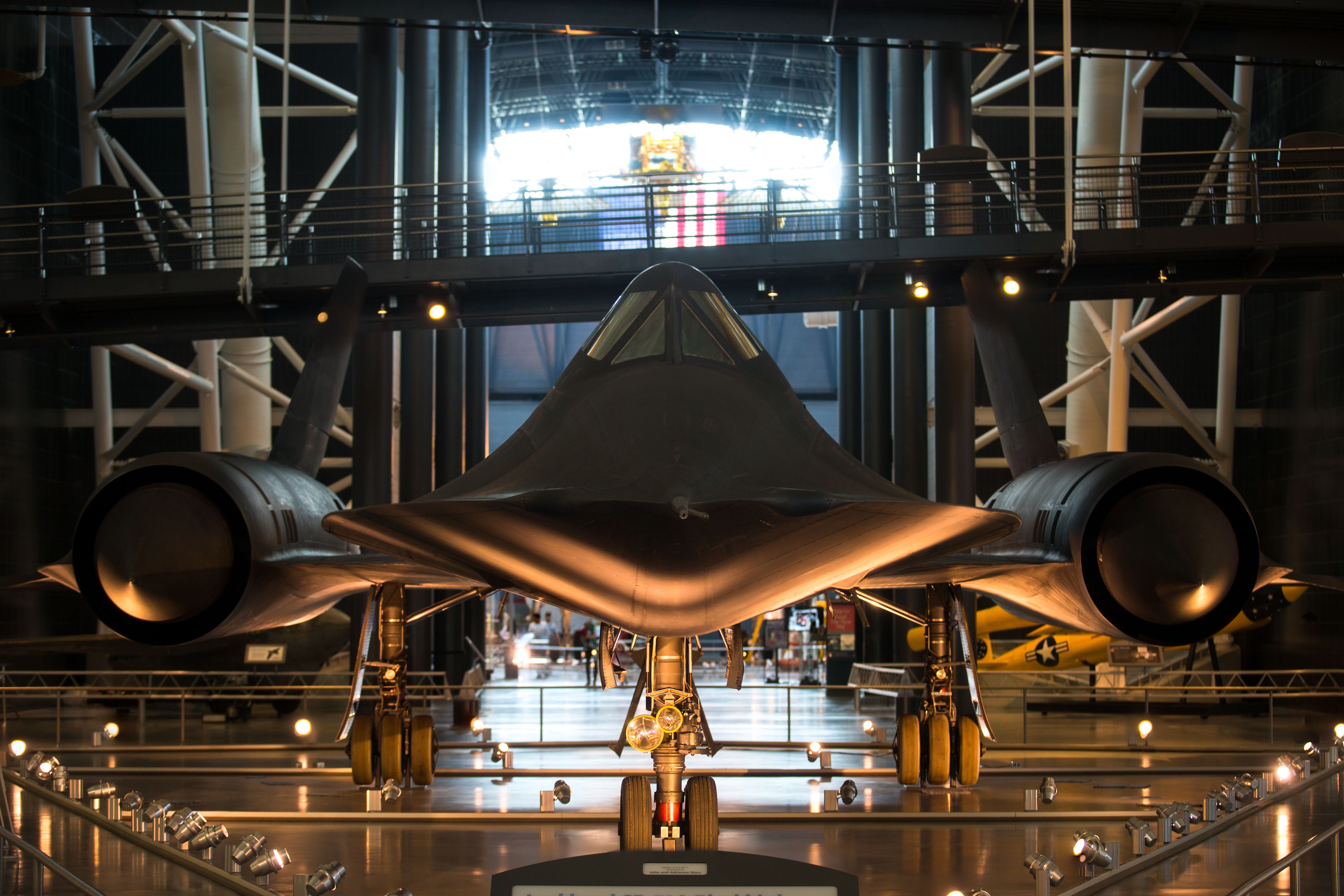
Related
Skunk Works: What Does Lockheed Martin Do In Palmdale, California?
A review of the United States’ leading aviation development firm.
5
Vought F4U Corsair
“Whistling Death”
I had to include at least one US Navy/US Marine Corps warbird on this list, right? So then, why did I go with the Corsair and not, say, the Grumman F6F Hellcat of “Marianas Turkey Shoot” fame?
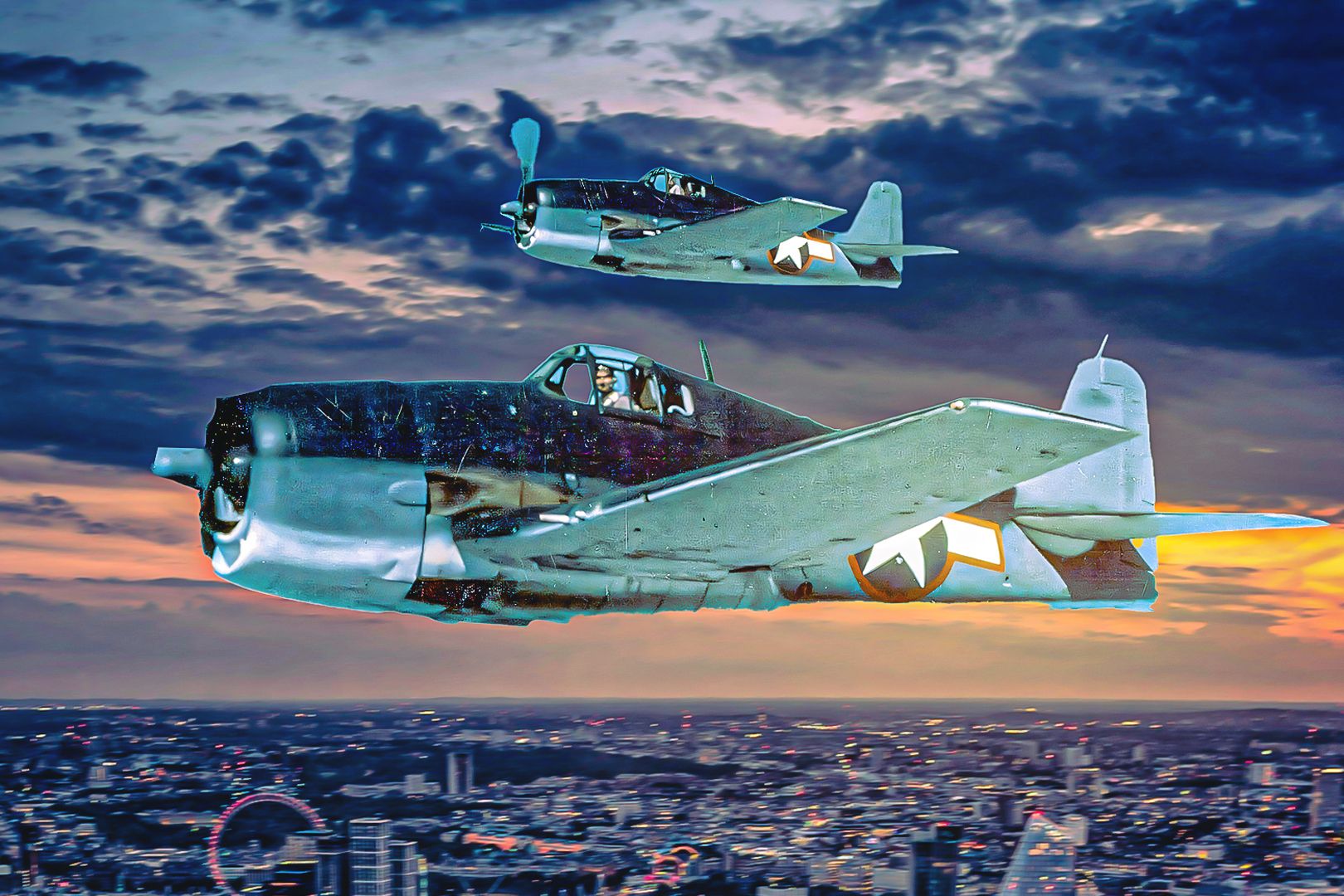
Related
History: Grumman F6F-3 Fighters In “The Great Marianas Turkey Shoot”
The Battle of the Philippines Sea was nicknamed “The Great Marianas Turkey Shoot.” The primary turkey hunter was the F6F Hellcat.
Well, as truly great a fighter as the Hellcat, I daresay that the Corsair was the most iconic USN/USMC fighter of WWII from a *cultural* standpoint, thanks to the 1976-1978 TV series “Baa Baa Black Sheep” (AKA “Black Sheep Squadron“) starring Robert Conrad, John Larroquette (in his younger, pre-“Night Court” days), and Dirk Blocker (son of Dan Blocker of “Bonanza” fame as Hoss Cartwright).
Japanese pilots feared and respected the Corsair so much that they allegedly nicknamed it “Whistling Death.” Though this nickname may be apocryphal, Japan’s pilots definitely admitted to fearing the Corsair more than any other opposing fighter, and I haven’t heard of any other Allied WWII fighter being bestowed with similarly morbid monikers by the Japanese.
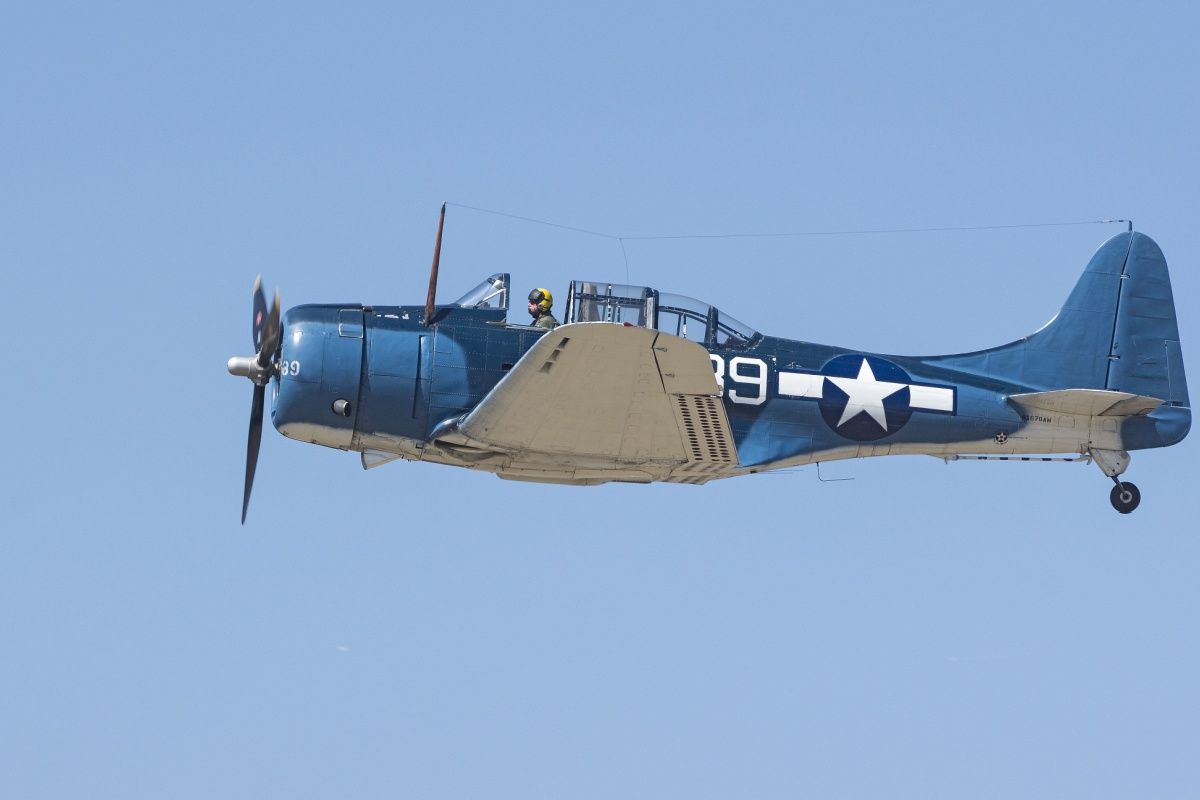
Related
History: 5 Iconic Carrier-Based Aircraft From The Second World War
While the British and Japanese boasted carrier-based aircraft that distinguished themselves early on, American aircraft dominated the later war.
Having said all that, what did the F4U Corsair and its pilots actually achieve during the war? Plenty. It was the first fighter plane that gave USN and USMC fighter pilots air superiority against the vaunted Mitsubishi A6M Zero fighter. According to Mr Cooke, Corsair pilots were credited with shooting down 2,140 Japanese warbirds in exchange for a loss of only 189 of their own, an incredible 11.3-to-1 kill ratio. The Corsair went on to serve with distinction during the Korean War, even managing to shoot down a MiG-15 jet fighter on one occasion.
Making its maiden flight on May 29, 1940, and In production from 1942 to 1953, the F4U had the longest production run of any US piston-engined fighter plane, with 12,571 built. There are roughly 37 airworthy Corsairs still around today, some with museums, others under private ownership.

